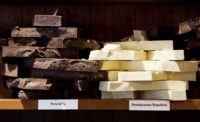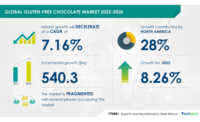Report: $19.5 billion in U.S. chocolate sales—and 20% growth in organic
Packaged Facts reports says higher prices, retail store growth spur sector

 Here’s some news to file under “obvious” — people in the United States love chocolate. In fact, they loved it $19.5 billion worth in 2011.
Here’s some news to file under “obvious” — people in the United States love chocolate. In fact, they loved it $19.5 billion worth in 2011.
That’s according to Chocolate Candy in the U.S., a just-released report from Packaged Facts, which says retail chocolate sales are up 6.6% compared to 2010.
What might be surprising though is where a lot of that chocolate was purchased — natural food stores.
Organic chocolate posted nearly 20% growth in 2011, according to SPINS scan data cited in the report. And, David Sprinkle, publisher for Packaged Facts, says chocolate is showing particular resilience in natural food stores.
However, that doesn’t mean supermarkets have lost their luster — they are still the main channel for chocolates sales, followed by convenience stores.
Regardless of where consumers are buying it though, the point is they’re buying it — a lot.
Packaged Facts says that while the country still is dealing with the aftermath of the recession, chocolate can be counted on to outpace overall food market growth.
In 2011, everyday chocolate, seasonal candies and premium chocolate all posted dollar gains, but that’s due partially to price increases implemented to offset rises in raw material and other costs.
The sector’s growth is affected, in part, to increasingly widespread foodie culture and consumers’ desire to indulge in an “affordable luxury”— but it’s also because there’s just more places to buy chocolate. Packaged Facts says there’s more chocolate retailers, both because of franchise expansion and successful independent shops looking to expand their footprints.
New packaging, and flavors; increased marketing and advertising; as well as rising prices on finished goods, driven by higher input costs also play a role in keeping sales strong.
Packaged Facts, a division of MarketResearch.com, publishes market intelligence on a wide range of consumer market topics, including consumer demographics and shopper insights, consumer financial products and services, consumer goods and retailing, consumer packaged goods (including foods and beverages, health and beauty care, and household products), and pet products and services. Packaged Facts also offers a full range of custom research
Looking for a reprint of this article?
From high-res PDFs to custom plaques, order your copy today!






